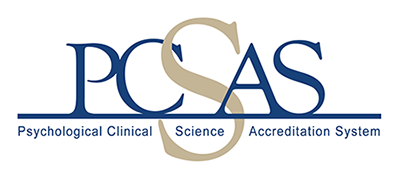by Shannon Grogans, M.A., & Nicholas Marsh, M.A., University of Maryland
The transition from being an undergraduate or post-baccalaureate research coordinator into one’s clinical psychology doctoral program can be an overwhelming task for individuals. Prospective doctoral students are typically highly successful and motivated; however, more support is likely needed for many during their transition. In fact, research has demonstrated that 50% of doctoral students experience psychological distress and a third of doctoral students are at risk for a common psychiatric disorder (Levecque et al., 2017). Common psychiatric symptoms from disorders like anxiety, depression, attention-deficit/hyperactivity disorder (ADHD) can all impair one’s executive functioning, organizational and time management skills and motivation. The transition into clinical psychology doctoral programs involves increasing demands, juggling multiple roles, and requires frequent task-shifting that tax even the most thorough organizational and time-management systems. Thus, it is crucial to evaluate our systems and implement organizational and time management skills that can optimize student’s daily work habits. This article aims to provide some concrete organizational skills and time management strategies that have been adopted from evidence-based interventions for school-aged individuals and adults (i.e., Homework, Organization and Planning Skills intervention; HOPS, CBT for Adults with ADHD; Langberg et al., 2018; Safren et al., 2005).
Most graduate students coming into doctoral programs will have some sort of organizational system, however, during this transition it may be helpful to revisit this system and identify what is working and not working. For the first step in any organizational system in graduate school, we recommend getting all required classes and meetings down on an electronic calendar.
- Setting up your calendar system: We recommend using an electronic calendar to allow students continuous access to their schedules. Links to virtual meetings can be embedded in the calendar system, so students can take meetings from anywhere on any device. To start, the easiest first step is to put in your course schedule and recurring meetings. Many students express that doing this lacks utility because they know when their classes are, however, doing this allows individuals to visualize time blocks and where one can fit in other things in their weekly schedule when building it out. After filling in course schedules, add in your weekly advisor meetings, department meetings, research meetings and/or reoccurring committee meetings. The most important step in setting up a calendar system is to attempt setting up any calendar system. We have found in our clinical work with students with ADHD and organizational difficulties, that this can be helpful in challenging all-or-nothing thinking.
- Utilize assists: We find it highly effective to utilize others as assists in this process. For example, when starting the semester or your program, sitting down with your cohort mates to go through your course schedules together and set up your calendars can be very motivating and helpful for accountability. Other assists may include your mentor, your own therapist, family, close friends, etc. Communicating with your advisor and reviewing your responsibilities for the semester is not only a helpful organization tool for the student, but also helpful in aligning mentors and mentees on the same page of all of one’s responsibilities.
- Creating a prioritized to-do list: Having some sort of to-do list is an essential ingredient in any part of an organization system. An example of where to start is generating tasks for each role and getting them written down on an overall list. First, going through all tasks needed for each class (readings, homework, reflections, exams, papers etc.) and adding the respective due dates for each task. Next, going through your responsibilities from your teaching or research assistantship. If you are unsure of a due date, this can be a good indicator that it would be helpful to have a conversation with your supervisor or set target due dates for the task. After completing this step for each role you hold in the program, this will allow you to start prioritizing tasks. One method of prioritization is to use the ABC labeling method. In this system, each to-do item can be labeled as: A (important and time sensitive), B (important or time sensitive), C (neither important or time sensitive). This will allow you to rearrange tasks on your to do list to provide structure of where to start with your work. Further prioritization can happen with the use of the due dates attached to each task. Eventually items in each category will continue to move up the alphabetical order as due dates approach and rearranging of the priority order will act accordingly.
- Breaking down assignments: One of the greatest barriers to getting started on tasks is knowing where to start. Breaking down assignments is critical in reducing this barrier and decreasing the distress large assignments can bring us. For example, a to-do list item may start out as “work on thesis.” However, that is a large, many step process that is not going to be completed in one work session. Therefore, further breaking down the assignment will provide clear direction and more manageable tasks. To do this, we often ask, “Where would you need to go to figure out next steps for completing this task?” For a thesis project, this could be generating an initial research question. To do so, this may be further broken down by creating separate items, like conducting literature search on a specific topic. Further steps to break down may include generating specific aims and hypotheses, creating an outline for the project, discussing smaller due dates of when you want/need to have sections completed (e.g., end of the semester will send draft to advisor of introduction through results), dates to have addressed advisor feedback, and even smaller personal goals of completing a paragraph/page or hour of writing on a given day. A sign that something needs to be broken down further is if looking at one’s to-do list it is unclear what the exact step you would take for working on a given task would look like or if there is uncertainty about how to tackle a large task.
- Putting it all together: An almost ubiquitous experience that individuals have at some point in their careers is the anxious-avoidance/procrastination cycle. In this cycle, our to-do list, schedules and daily responsibilities can feel like too much. To prevent all of the work piling up and avoiding it, adding superficial early deadlines is a strategy for some people, but in our clinical work we often hear this fails for students. It is hard to “trick” our overwhelmed brains into feeling that surge in motivation caused by an immediately pending deadline. Instead, we often attempt to pull together our organizational system of breaking tasks down from our to-do list and start mapping them onto our schedules with generous time estimations to complete these tasks. After filling in our schedules with our to-do lists, this can help visualize some longer-term tasks and create a genuine increase in our sense of urgency. For example, it may feel far out to have a draft of a thesis due in 3 weeks. However, once filling out your schedule with your broken-down to-do list, you may notice you have limited blocks of time to accomplish this task. While most individuals will not end up sticking to their schedule perfectly as other responsibilities come up inside and outside of work, the organizational system now created can work flexibly to adapt to our changing weeks and still provide structure.
Scaffolding a useful organization system can take a lot of work and time. Usually, it will not be enough to read about these strategies to result in changes to our systems. Thus, it may be important to seek out additional areas of support to help in scaffolding these skills. Research has shown that for individuals with ADHD they can efficiently develop organizational strategies, however, continuous use of these skills may be more challenging (Durand et al., 2020). For reference, helpful clinical manuals that have a paired workbook for managing organizational skills can be found here. Additional free resources for more organizational skills, finding providers and additional resources related to managing symptoms of executive functioning can be found here and here. It may even be helpful for some students to ask for their own therapist to work through an Organizational Skills Training (OST) manual like this with them during this transition to graduate school to provide increased structure and accountability. Furthermore, helpful videos for managing organizational systems and time management that have been informed by clinical psychology experts can be found here. These resources are targeted for individuals with symptoms of ADHD, however, are universally helpful organization and time management skills for everyone with and without ADHD. While the focus of this article is providing tangible organizational and time management strategies, the author’s also recognize some of the largest barriers to implementation of these skills are often mental health barriers. It is critical for our programs to consider how we can continue to support individuals in managing their own mental health, work/life balance, stress management through systematic changes in the way we conduct supervision, mentorship, program expectations, and program culture. Future work exploring these avenues will be essential in continuing progress to support our clinical psychology doctoral students in their training.
References
Durand, G., Arbone, I., & Wharton, M. (2020). Reduced organizational skills in adults with ADHD are due to deficits in persistence, not in strategies. PeerJ, https://doi.org/10.7717/peerj.9844
Langberg, J. M., Dvorsky, M. R., Molitor, S. J., Bourchtein, E., Eddy, L. D., Smith, Z. R., … & Eadeh, H. M. (2018). Overcoming the research-to-practice gap: A randomized trial with two brief homework and organization interventions for students with ADHD as implemented by school mental health providers. Journal of Consulting and Clinical Psychology, 86(1), 39.
Levecque, K., Anseel, F., De Beuckelaer, A., Van der Heyden, J., & Gisle, L. (2017). Work organization and mental health problems in PhD students. Research policy, 46(4), 868-879.
Safren SA, Otto MW, Sprich S, Winett CL, Wilens TE, Biederman J. Cognitive– behavioral therapy for ADHD in medication-treated adults with continued symptoms. Behav. Res. Ther. 43, 831–842 (2005).



